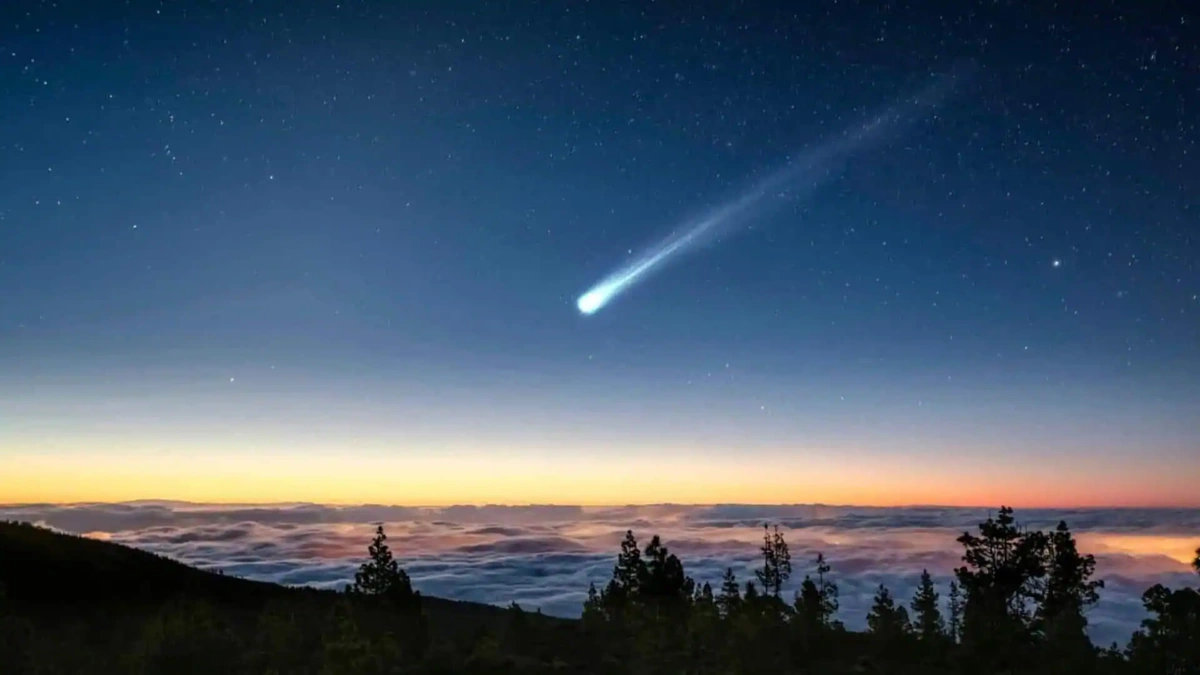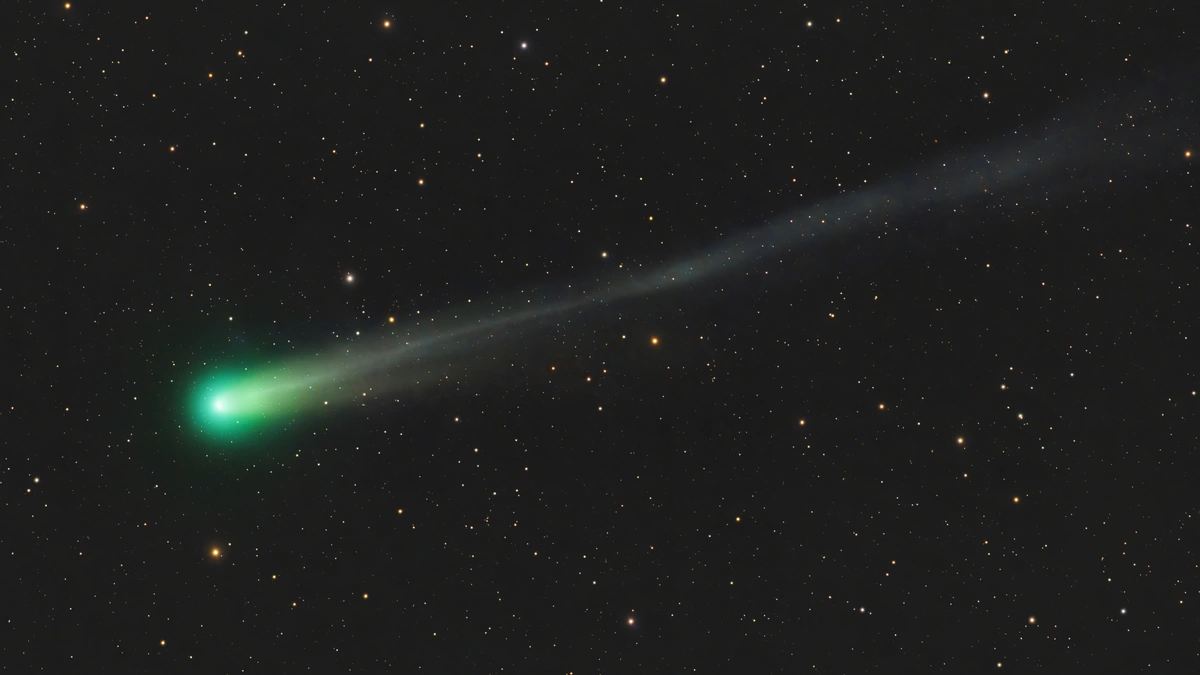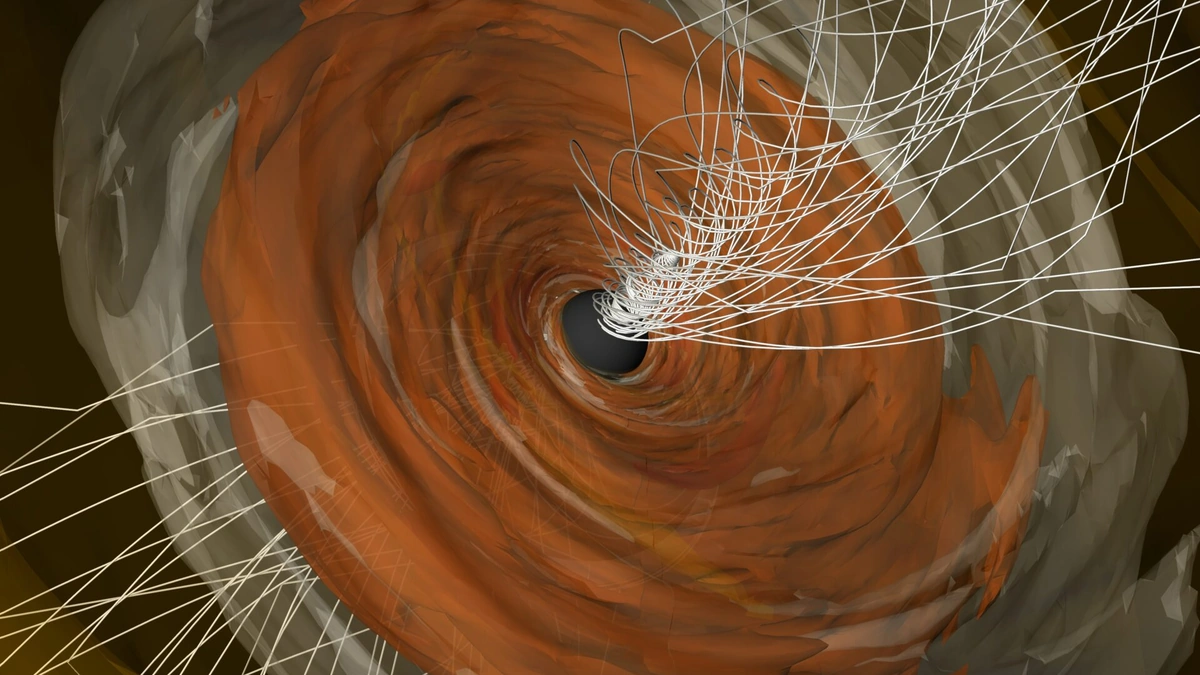October 2025 Sky | Viewing Two Comets in a Celestial Double Feature
Okay, picture this: October 2025. You, me, a rooftop, and not one, but two comets blazing across the night sky. Sounds like something out of a movie, right? But it’s not. It’s real, and it’s happening. The celestial stage is set for a double feature, and trust me, you don’t want to miss this cosmic show. But why is this such a big deal? Let’s dive in, because, here’s the thing, it’s more than just pretty lights.
Why Two Comets in One Month is Astronomically Awesome

So, you might be thinking, “Okay, a couple of comets . What’s the big deal?” Well, the rarity of the event lies in the mathematics of celestial mechanics and the often unpredictable nature of these icy wanderers. Predicting cometary orbits is tough enough; predicting two that become visible in the same month? That’s like winning the cosmic lottery.Comets, unlike planets, have highly eccentric orbits, which means they spend most of their time far away from the Sun, only swinging close enough to become visible for a relatively short period. To have two of these orbits align in such a way that they both become visible in the same month from Earth is a truly special occurrence.
The implications? It’s a fantastic opportunity for both seasoned astronomers and budding stargazers to witness something truly extraordinary. Plus, it fuels scientific research. Observing two comets simultaneously allows scientists to gather more data and compare their compositions, behavior, and interaction with the solar wind. And let’s be honest; it’s just plain cool. The kind of story you tell your grandkids. The kind of thing that makes you feel small in a good way in the face of the universe. But,
How to Spot These Celestial Wanderers From India
Alright, let’s get practical. How do you actually see these celestial objects from India? First things first: location, location, location. Get as far away from city lights as possible. Light pollution is the enemy here. Think outskirts of your city, a nearby village, or even better, a trip to the mountains or a rural area. Darker skies mean you’ll see fainter objects more easily. Experience plays a big role; a common mistake I see people make is thinking they can just look up and bam! There it is. It takes a little patience, and some preparation.
Next, timing is everything. You’ll want to check astronomy websites and apps for the specific dates and times when the comets will be at their brightest and highest in the sky. These predictions can change, so stay updated. According to various astronomical resources, one of the best ways to track the exact location and time of visibility for these comets is to use a stargazing app. These apps often use your location data to show you exactly where to look in the sky. A good pair of binoculars is your best friend. While the brighter of the two comets might be visible to the naked eye, binoculars will enhance the view and reveal more details. A small telescope will give you an even closer look, allowing you to see the comet’s tail and coma more clearly. What fascinates me is, with a little bit of planning, and a dash of patience, you can witness a breathtaking event right from your backyard!
The Emotional Connection | Why This Matters To You
Beyond the science and the spectacle, there’s something deeply human about gazing at a comet. It’s a connection to our ancestors, who looked up at these same skies and wondered about their place in the cosmos. It’s a reminder of the vastness of the universe and the fragility of our own existence. What if I told you that comets might have brought water and organic molecules to Earth billions of years ago, seeding life itself? Sounds wild, right? But it’s a theory that’s gaining traction. That means when you look at a comet , you might be looking at your own cosmic origins.
Think about it. In our daily lives, we’re often caught up in the mundane, the trivial. But when we look up at the night sky, especially when there’s something as dramatic as a bright comet streaking across it, it puts everything into perspective. It reminds us that we’re part of something much bigger, something ancient and awe-inspiring. It can evoke a sense of wonder, humility, and even a bit of existential contemplation. And isn’t that worth stepping outside for, even if it’s just for a few minutes? The celestial ballet, the cosmic dance…it’s a reminder that the universe is constantly in motion, constantly changing, and constantly offering us glimpses of its beauty. Let me rephrase that for clarity: it’s a chance to reconnect with something profound.
Comets | Unveiling Secrets of the Solar System
Here’s the thing about comets : they’re not just pretty faces. They’re time capsules from the early solar system. Composed of ice, dust, and rock, they’ve been floating around in the deep freeze of space for billions of years, preserving the raw materials from which our planets were formed. Studying comets is like archaeology, but instead of digging up ancient artifacts, scientists are analyzing space-borne relics. According to NASA , scientists analyze the composition of comets’ coma and tails to understand the chemical makeup of the early solar system.
When a comet gets close to the Sun, it heats up, and its icy components begin to vaporize, creating a glowing atmosphere called the coma and often a spectacular tail. This process releases gases and dust that can be analyzed to determine the comet’s composition. But wait, there’s more! By studying the way comets interact with the solar wind (a stream of charged particles emitted by the Sun), scientists can also learn about the magnetic fields and plasma environment of the solar system. This gives us clues about the conditions that existed when our solar system was young. This helps us to better understand the processes that led to the formation of planets and even the emergence of life.
Essential Gear for Comet Watching
So, you’re ready to embark on your comet-watching adventure! Here’s a breakdown of the essential gear you’ll need to make the most of it. Firstly, a reliable pair of binoculars. 7×50 or 10×50 binoculars are ideal for comet hunting, as they provide a good balance between magnification and field of view. Then, a stargazing app on your smartphone. There are tons of free and paid apps available that can help you locate comets and other celestial objects in the night sky. Some popular options include Stellarium, SkyView Lite, and Star Walk 2. I initially thought this was straightforward, but then I realized the importance of comfort.
Dress warmly in layers, even if the weather seems mild. Temperatures can drop significantly at night, especially in rural areas. Bring a comfortable chair or blanket to sit or lie on. You’ll be spending a lot of time looking up, so you want to be as comfortable as possible. A red flashlight. White light can ruin your night vision, so a red flashlight is essential for reading star charts or adjusting your equipment without affecting your ability to see faint objects. Last but not least, a thermos of hot chai or coffee. Because what’s a celestial adventure without a little bit of warmth and caffeine? Also, check out this related content before you step out to view the comet. And,
FAQ | Your Comet-Watching Questions Answered
Frequently Asked Questions
Will I be able to see the comets with my naked eye?
Potentially, yes! But it depends on their brightness and how dark your sky is. Binoculars are highly recommended.
What’s the best time to view these comets?
Check astronomy websites for specific dates and times, as these can change. Usually, it’s best a few hours after sunset or before sunrise.
Do I need a fancy telescope to see them?
Nope! Binoculars will do the trick. A telescope will give you a closer look, but it’s not essential.
What if the weather is cloudy?
Unfortunately, you’ll have to wait for a clear night. Patience is key in astronomy!
Are these comets dangerous to Earth?
Absolutely not. They’re at a safe distance.
Where can I find the most up-to-date information?
Reliable astronomy websites and apps are your best bet. As per the guidelines mentioned in the information bulletin, avoid unverified sources.
So, there you have it. October 2025 is shaping up to be a month to remember for skywatchers in India. Two comets , a celestial double feature, and a chance to connect with the cosmos in a way that few get to experience. The cosmos is always talking to us, if we just take the time to listen. The opportunity awaits and don’t forget to read more about comets here .













